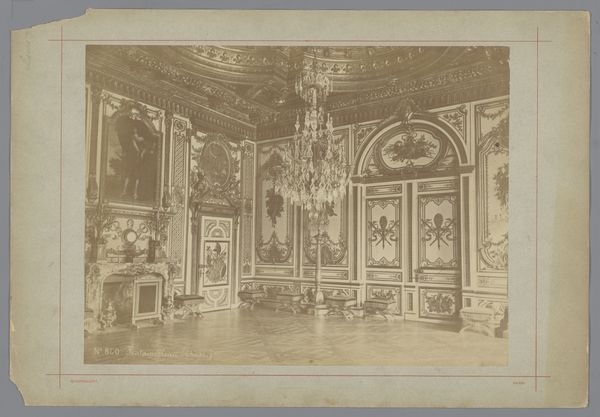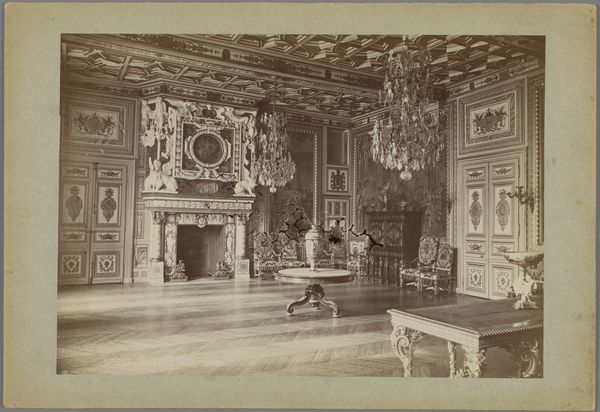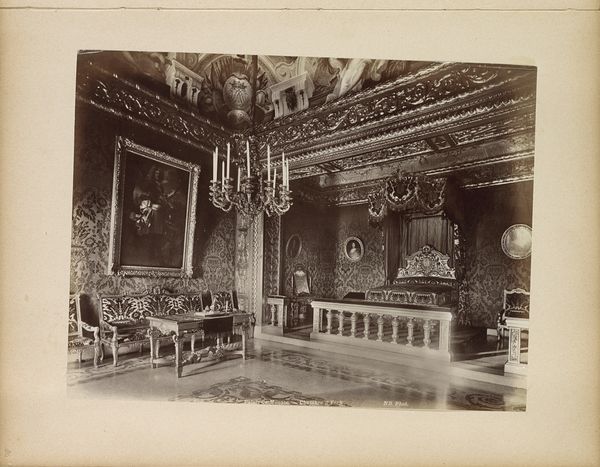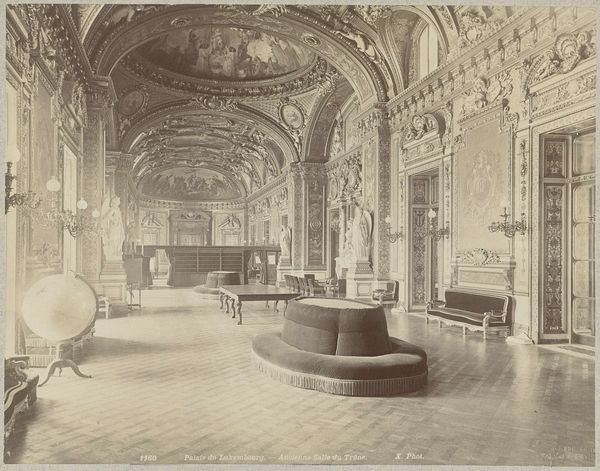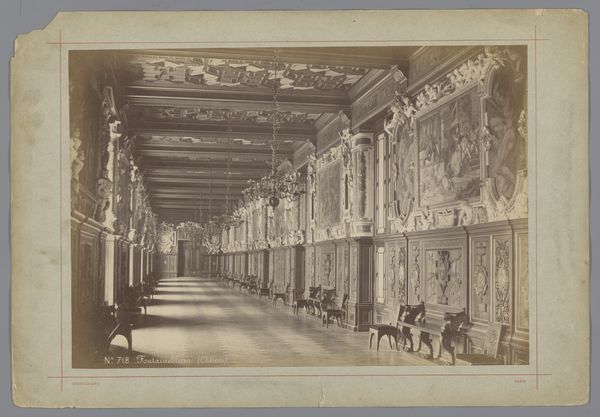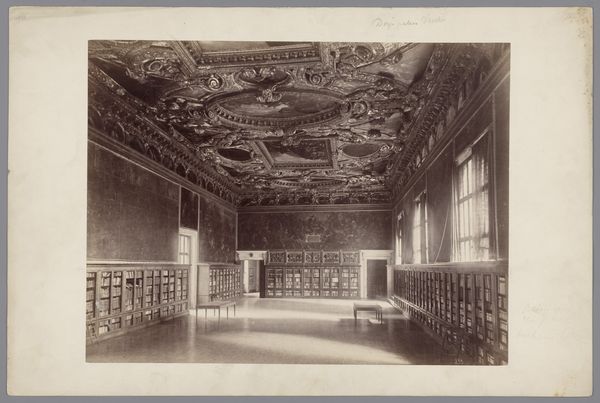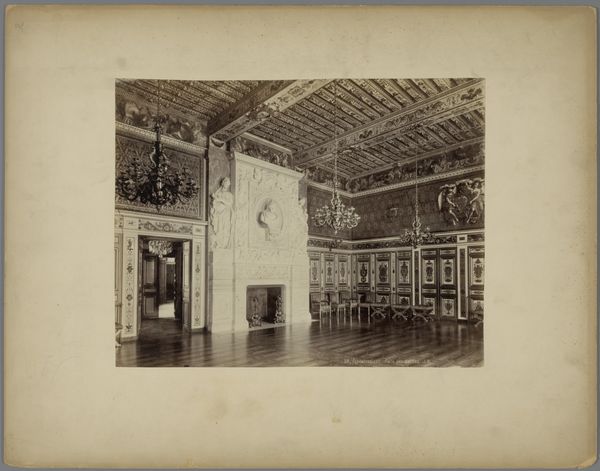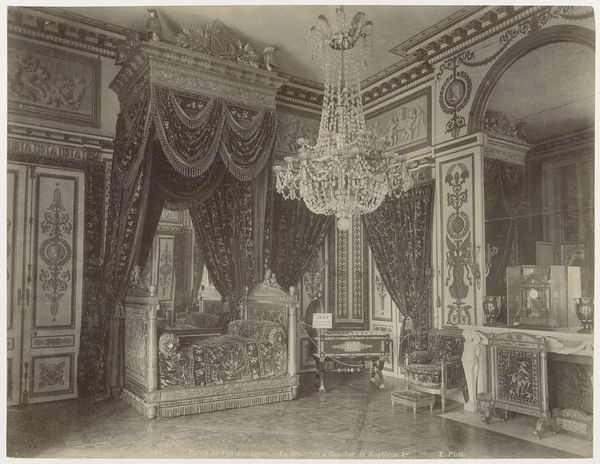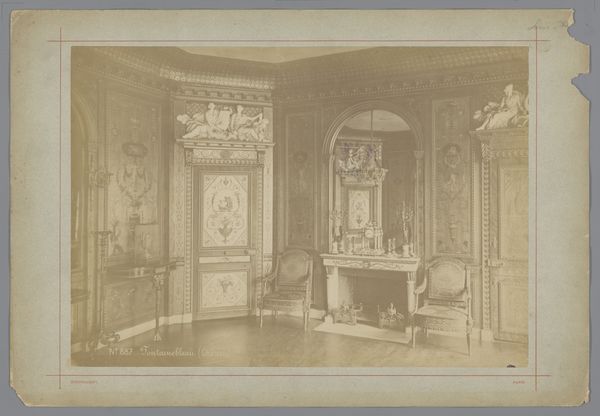
Salon van Lodewijk XIII in het paleis van Fontainebleau c. 1875 - 1900
0:00
0:00
medericmieusement
Rijksmuseum
Dimensions: height 265 mm, width 367 mm
Copyright: Rijks Museum: Open Domain
Curator: What strikes you most when you look at this photograph? It's a print, made sometime between 1875 and 1900 by Mèdèric Mieusement. The image depicts the Salon of Louis XIII at the Palace of Fontainebleau. Editor: The stillness is palpable. There’s an echo of absence, even. The opulent chandeliers and ornate detailing feel…suspended in time, devoid of human presence. Almost ghostly, in a way. Curator: That sense of suspended time is fascinating, especially given that photography itself was still relatively new when this image was captured. Consider Fontainebleau’s history, though: a royal residence for centuries, a stage for grand political theater and intimate family dramas. Editor: Exactly. Each symbol, each flourish, screams of a specific code of power and social standing. I imagine these decorative choices serving a function beyond mere aesthetics, acting as memory prompts for identity. The repetition must've instilled a strong sense of belonging in the royals who grew up there. Curator: Yes, the decorative scheme creates a sense of continuity. But the choice to photograph it during a moment of seeming vacancy also reveals a kind of socio-political shift. Remember, this was taken after the Second Empire had fallen. The aristocracy's influence was waning as new public institutions—like museums and archives—rose to prominence, democratizing cultural heritage. Editor: So, this isn't just about documenting a beautiful space; it's also about freezing a specific social order in time, like a cultural relic awaiting analysis. Mieusement wasn’t simply capturing the aesthetic. It seems that it reveals what's lost when a society transforms, the symbolic language that becomes increasingly archaic to new generations. Curator: Precisely. It's an incredibly potent image, rich with symbolism but made more interesting with the social context of its time. The Palace remains, but the code of nobility… that is something else entirely. Editor: It becomes like a set piece. We're not invited in. Rather, we view the stage, bereft of actors, aware of a show now forever closed. Curator: A poignant and unsettling image indeed. Thanks for sharing that, the insight is helpful.
Comments
No comments
Be the first to comment and join the conversation on the ultimate creative platform.
